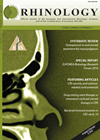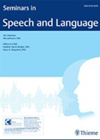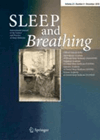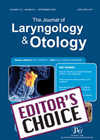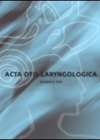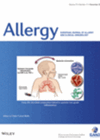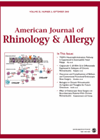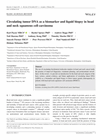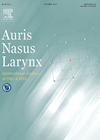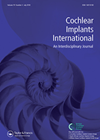
Journal Reviews archive for 2019
A trial of house dust mite sublingual tablet in children with allergic rhinitis
The house dust mite (HDM) is one of the commonest causative agents in allergic rhinitis (AR), affecting patients across all demographics. Recently, sublingual immunotherapy (SLIT) has been shown in clinical trials and meta-analysis to be effective compared to placebo in...
Eustachian tube function before and after FESS
This is a prospective study from the UK looking at Eustachian tube dysfunction (ETD) in patients with chronic rhinosinusitis (CRS) undergoing surgery. Fifty-seven consecutive patients who had failed medical therapy and were scheduled for endoscopic sinus surgery completed SNOT-22 and...
Maintaining a voice throughout the MND journey
Amytrophic lateral sclerosis, also known as motor neurone disease (MND), is a progressive neurological disease that destroys the nerve cells responsible for controlling voluntary muscle movements resulting in severe dysarthria in 95% of people with MND. It may lead to...
DISE as a rationalising tool for sleep apnoea surgery
This retrospective study on 85 adult obstructive sleep apnoea (OSA) patients provides further interesting information for sleep surgeons. These patients were all investigated with polysomnography (PSG) and drug induced sleep endoscopy (DISE). They all then underwent a simple uvulopalatoplasty with...
How effective and safe is audiologist-led screening of acoustic neuroma in patients with asymmetrical hearing loss and unilateral tinnitus?
About two out of 100 patients presenting with asymmetric hearing and unilateral tinnitus have acoustic neuroma. The traditional method in which these patients first attend a clinician and then undergo screening through an MRI, can be expensive and prolong the...
Is there a role for facial nerve decompression in Ramsay Hunt syndrome?
This is an interesting paper. The authors recommend a transmastoid facial decompression for patients with complete facial nerve paralysis with House Brackman HB 5/6 who do not show any sign of recovery after two weeks of treatment following a diagnosis...
CRSwNP initiation, not always an interleukin fault
CRSwNP, similar to asthma, is an inflammatory disorder (type II) with eosinophilia and raised IL-5 and IL-13. Inflammation in CRSwNP is thought to be started by IL-25, IL-33 and thymic stromal lymphopoietin (TSLP), all of which form an important part...
Balloons – more complicated than first thought?
This study describes the complications seen after balloon sinuplasty (BSP) - a commonly performed procedure (particularly in the USA where it is often performed as an office procedure) versus traditional functional endoscopic sinus surgery (FESS). The data source was a...
Tonsillectomy in or out?
Although tonsillectomy is the most common surgical act performed in ENT practice, there is still some concern about the safety of outpatient or day surgery scheduling, especially in adults. Although this has been common practice in many departments for some...
Review of surgical treatments of intractable Meniere’s disease
This is a nice summary of the evidence available for the surgical treatments for intractable Meniere’s disease. To summarise, in five-10 years, over 90% of vestibular neurectomy cases, more than 80% of intratympanic gentamycin treatment, and 70-80% of endolymphatic sac...
Superstructure-preserving stapes surgery in otosclerosis
Stapedectomy is a well-established procedure for otosclerosis but it has a small risk of a non-hearing ear, which can be devastating for patients. The development of a procedure which is safer and with a less steep learning curve for junior...
Cochlear implantation in children with congenital long QT syndrome
Jervell and Lange-Neilsen syndrome is a condition where sensorineural deafness coincides with inherited abnormalities of the heart, resulting in prolonged ventricular repolarisation, frequently shown on an ECG with a prolonged QT interval. These children can present at implant centres for...


